February 13 Inland Train Journey (Day 139)
Our first full day in Dunedi. Actually, we are staying about 8km outside of Dunedin, in St. Leonard, a tiny community of houses on the road skirting the north side of Otago Harbour towards Port Chalmers. Port Chalmers sits about half way into Otago (oh-tah-go) Harbour and is a major port in NZ. It was the site where the first load of frozen meat (lamb & mutton I assume) left for London in a refrigerated ship, in 1882! This started the main export trade of meat which now includes exporting raw logs, and also now includes berths for huge cruise ships! Dunedin city proper sits at the inland end of the harbour. Our adventure today however takes us further inland, into the rural areas where the meat and timber is raised, on the farms of the Central Otago District. The Inlander Scenic Train trip is a sporadically scheduled trip on the old Central Otago Rail line that was built in the late 1800’s. Reaching deep into the rural ‘wop-wops’ (backcountry/middle of nowhere), it was a vital link for the farmers to get their stock to market. Departure was scheduled for 10am, but we arrived just after 9am to view the amazing Dunedin Railway Station!

Claiming to be the second most photographed building in the southern hemisphere! Surpassed only by the Sydney, Australia Opera House!
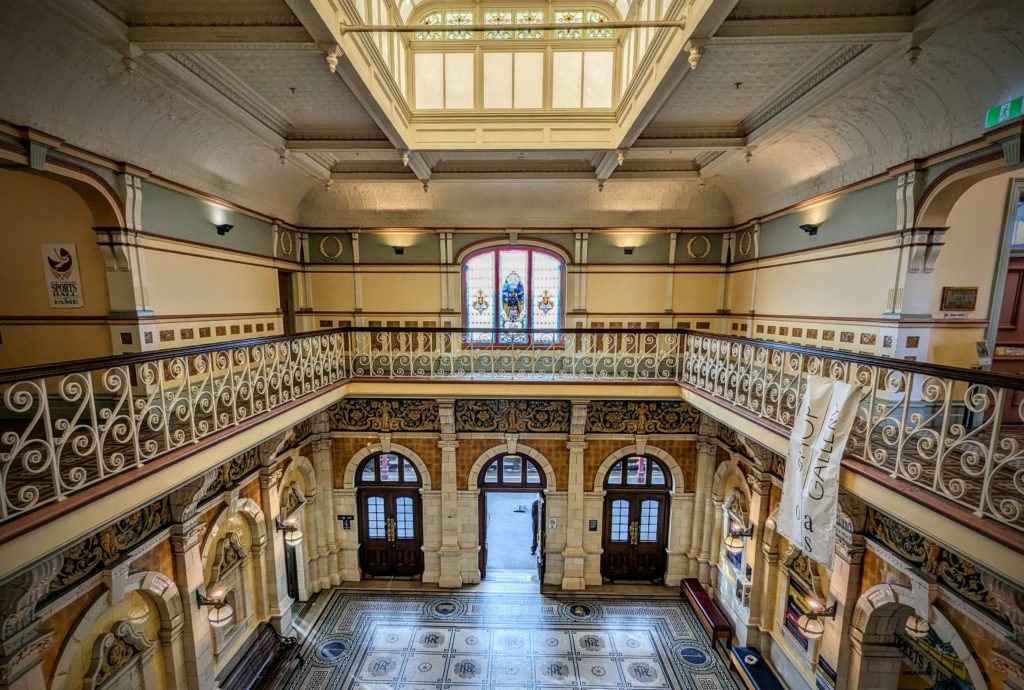
The Victorian era was coming to a close when the station was opened in 1906 and it is filled with impressive tileworks, fabulous mosaics, some stained glass and wrought iron decoration!
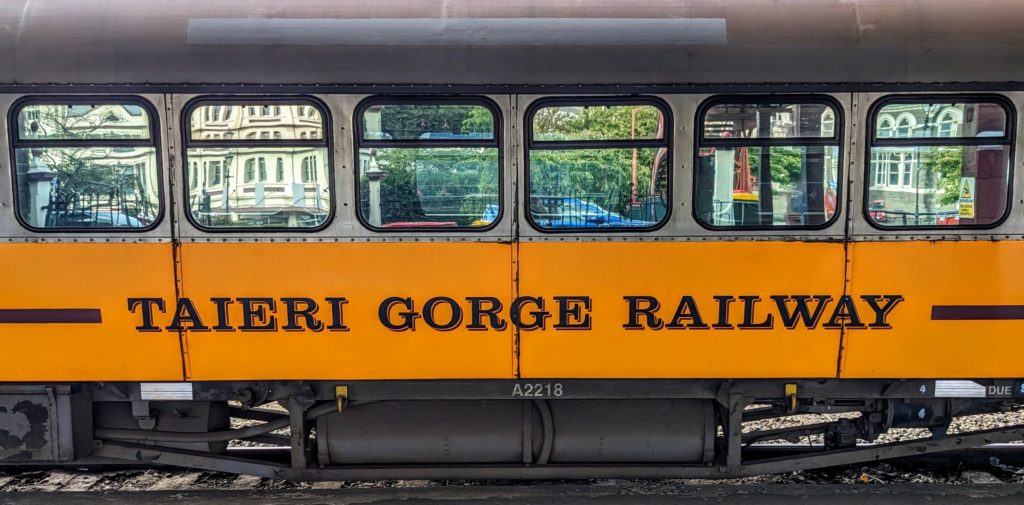
As the rail era ended with the prominence of automobiles and highways, in 1990 the railway moved into private hands as The Taieri Gorge Railway, then the Dunedin Railway, operating as a scenic route. Maintenance costs further reduced the line to one-third of it’s original length, with the other two-thirds either submerged under a man-made lake or removed to become the Otago Central Rail Trail.
The Inlander now travels from the Dunedin Railway Station through the Taieri gorge, carved by the Taieri river, to the tiny stop at Hindon, site of an old gold mining town of the 1860’s. Parts of the gorge are inaccessible by any other means except bush-whacking, there aren’t even trails through it! Before Covid the railway would take fishermen into the gorge, let them off the train to hike and fish stretches of the river, then pick them up at a later date at a specified stop!
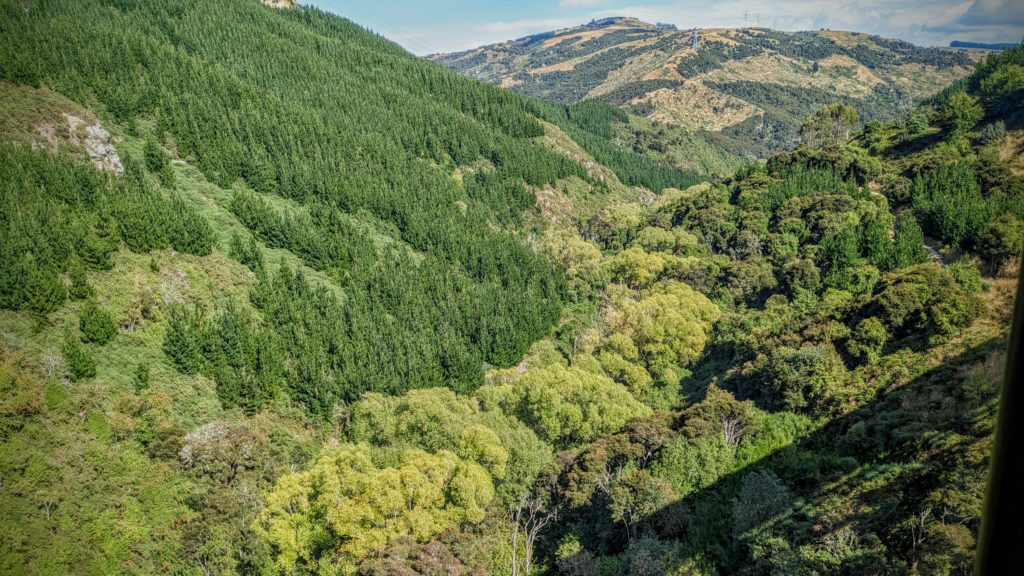
The shadow of the train crossing a bridge over the Taieri river. Native bush on the right and along the river bed. Introduced pine on the hill on the left. Clear cut pine plantations in the background.
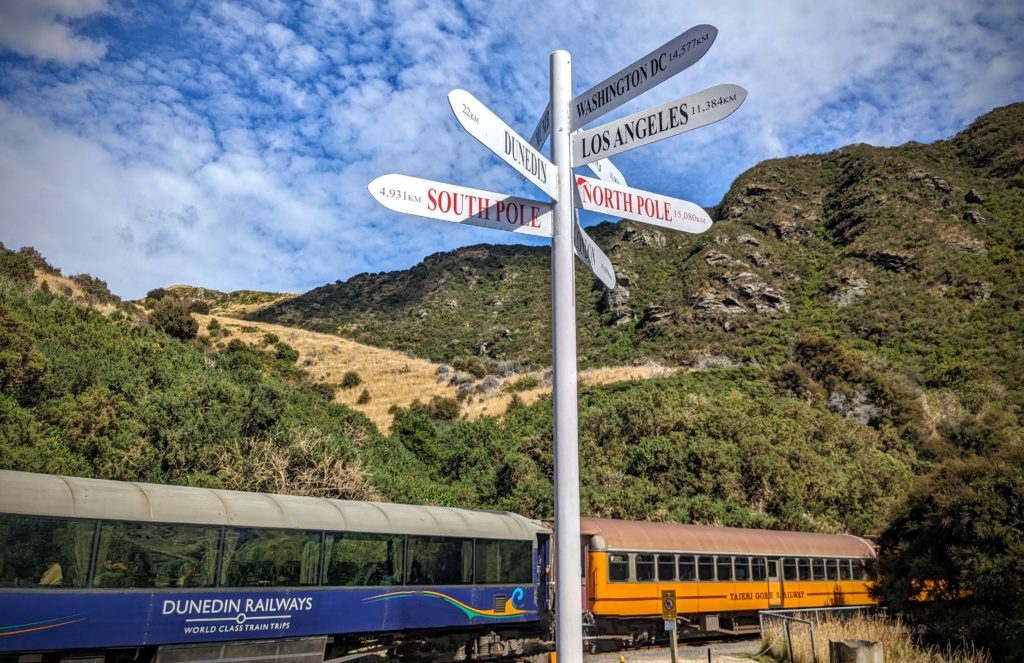
The stop at Hindon is surrounded by rimrock and soaring harrier hawks. We had time to walk around, read some history of the area and get a glass of wine before we headed back towards Dunedin.
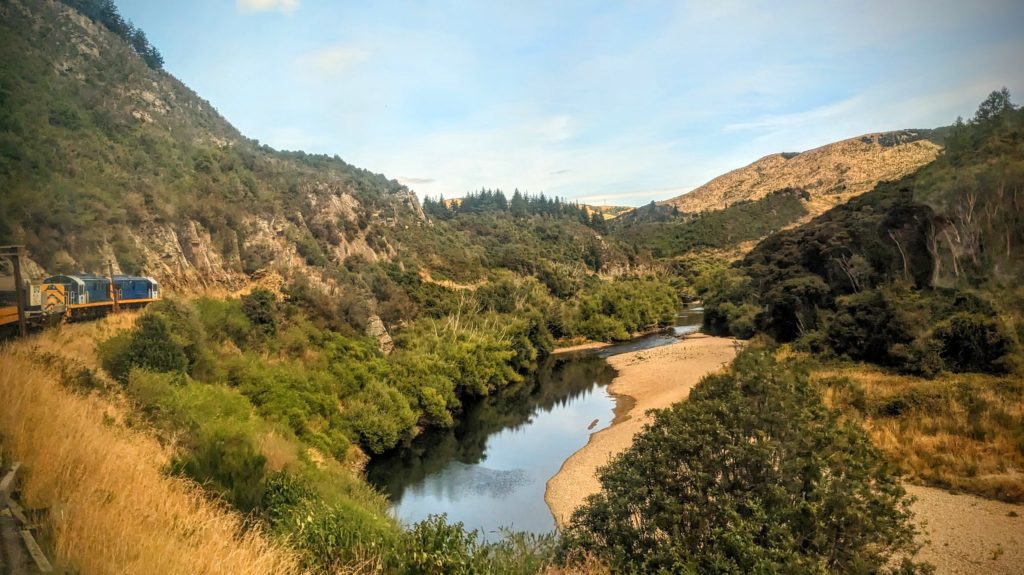
The river is low this summer, but the commentary spoke of several past floods that filled the gorge up to the tracks!

We passed the old stop at Parera that is now a private residence, accessed only by walking through a railway tunnel!
It was a fun ride through interesting terrain, crossing many bridges (‘viaducts’ here in NZ) including the Wingatui Viaduct, “the largest wrought iron structure in New Zealand since it was built in 1887” (per wikipedia), and through many tunnels which were dug by hand in the late 1880’s!
